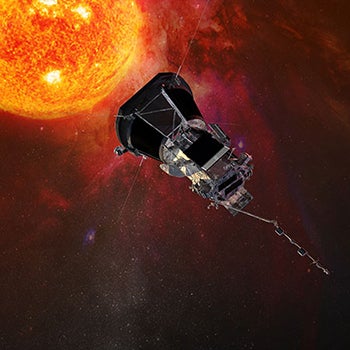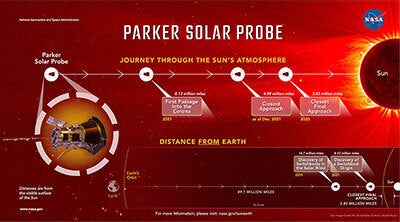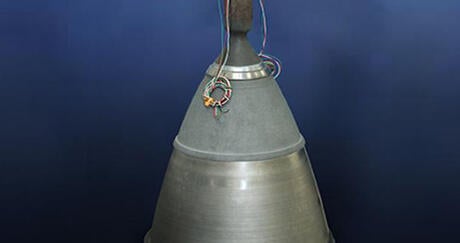
Artist’s concept of the Parker Solar Probe spacecraft approaching the sun. Credit: NASA/Johns Hopkins APL
With an assist from onboard thrusters supplied by L3Harris, NASA’s Parker Solar Probe is on its way to its closest encounter with the Sun, the first of at least three such passes that will bring the spacecraft within 3.8 million miles of the surface at speeds of 430,000 miles per hour.
“Designing and building the Parker Solar Probe propulsion system was the kind of program you tell young people about, to get them excited about space,” said Ron Portz, Project Engineer, Aerojet Rocketdyne, L3Harris. “We designed and fabricated the propulsion system that will steer the fastest object ever built by humans as it passes closer to the Sun than any human-made object in history.”
The first close pass enabled by L3Harris propulsion will take place Dec. 24, to be followed by two similar approaches in 2025. This series of encounters, during which Parker Solar Probe will dip into and sample the Sun’s upper atmosphere, or corona, were set up by a gravity assist from the probe’s seventh and final flyby of Venus, which took place Nov. 6.
Throughout this groundbreaking mission, Parker Solar Probe’s L3Harris-supplied propulsion system has enabled the course corrections needed for the Venus flybys, each of which has tightened the spacecraft’s elliptical orbit around the Sun.
The spacecraft’s propulsion system, built and tested at the L3Harris facility in Redmond, Washington, consists of a propellant tank, valves, and 12 MR-111C hydrazine thrusters, each generating 1 pound of thrust. These thrusters have provided propulsion on a number of NASA exploration spacecraft including New Horizons, now traveling through the Kuiper Belt following its Pluto flyby in 2015.
Named after physicist Eugene Newman Parker, the Parker Solar Probe is helping to answer longstanding questions about the Sun’s corona and the steady stream of high-energy particle emissions known as solar wind. The Johns Hopkins Applied Physics Laboratory in Laurel, Maryland, designed, built and operates the spacecraft and manages the mission for NASA.
Since its August 2018 launch atop a United Launch Alliance Delta IV Heavy rocket powered by L3Harris engines, the probe has orbited the Sun 21 times. Its primary mission, which runs through September 2025, includes 24 orbits of the Sun.







